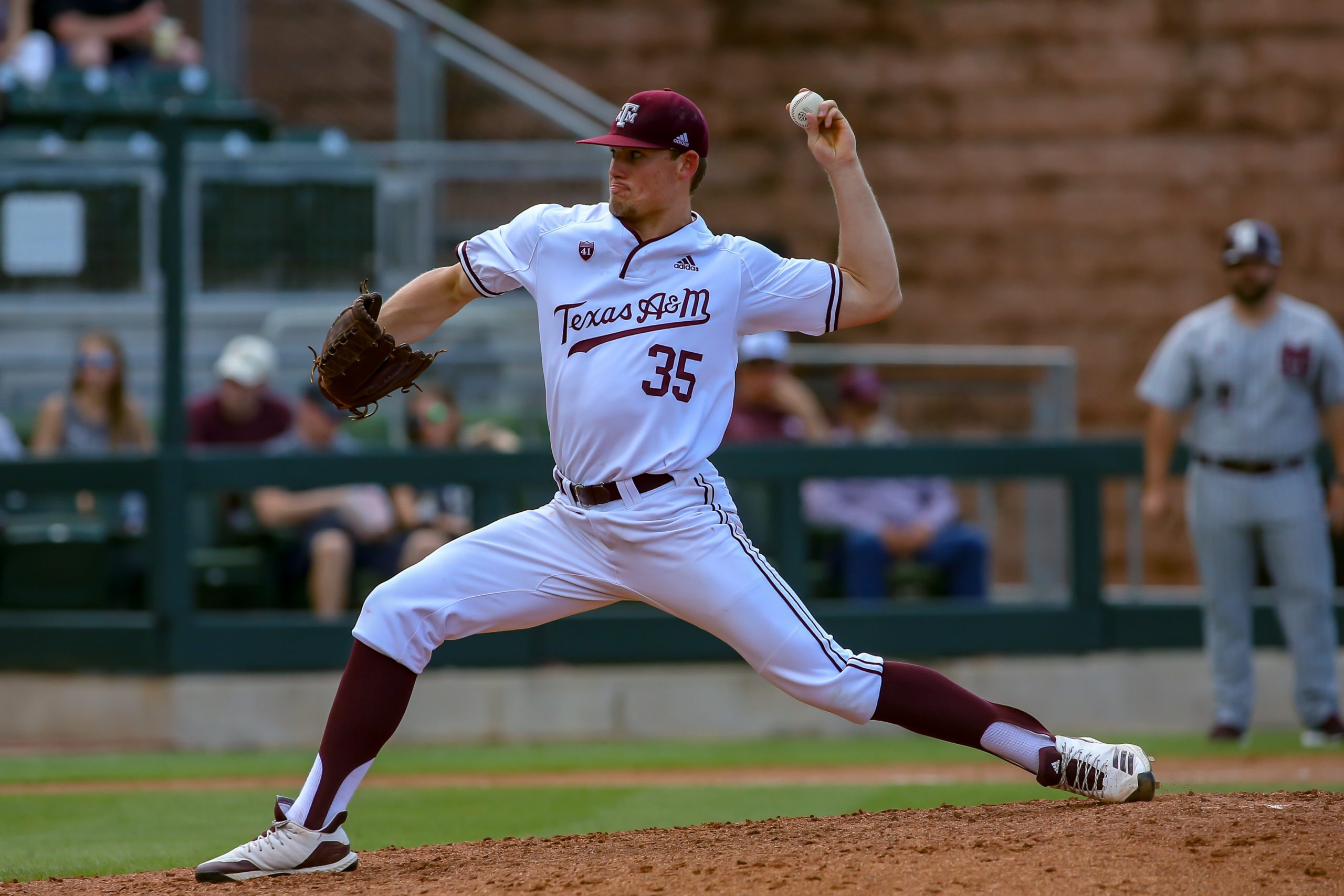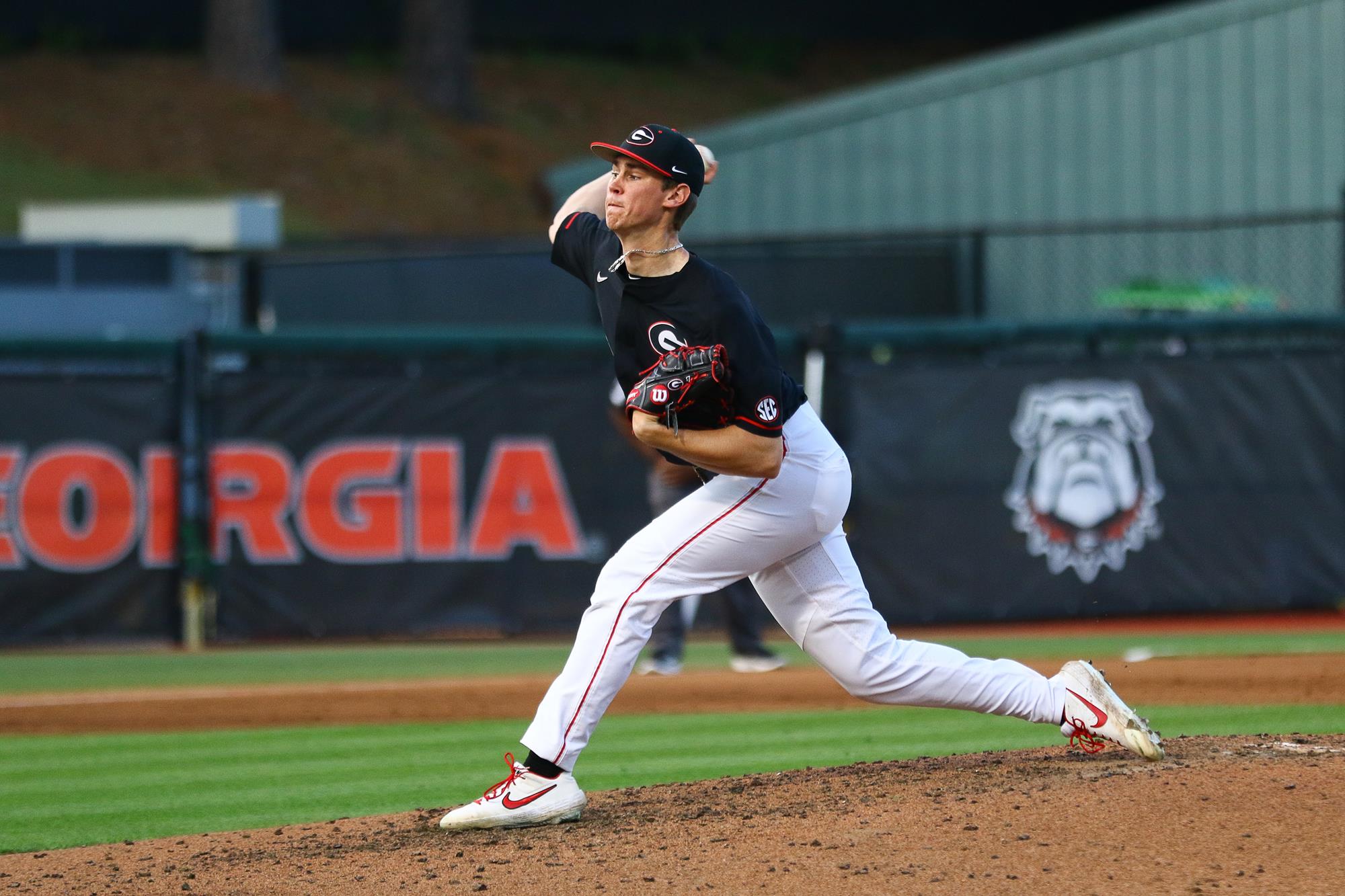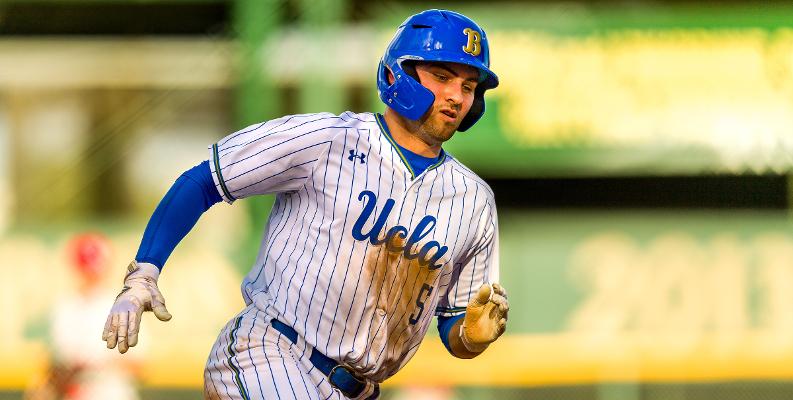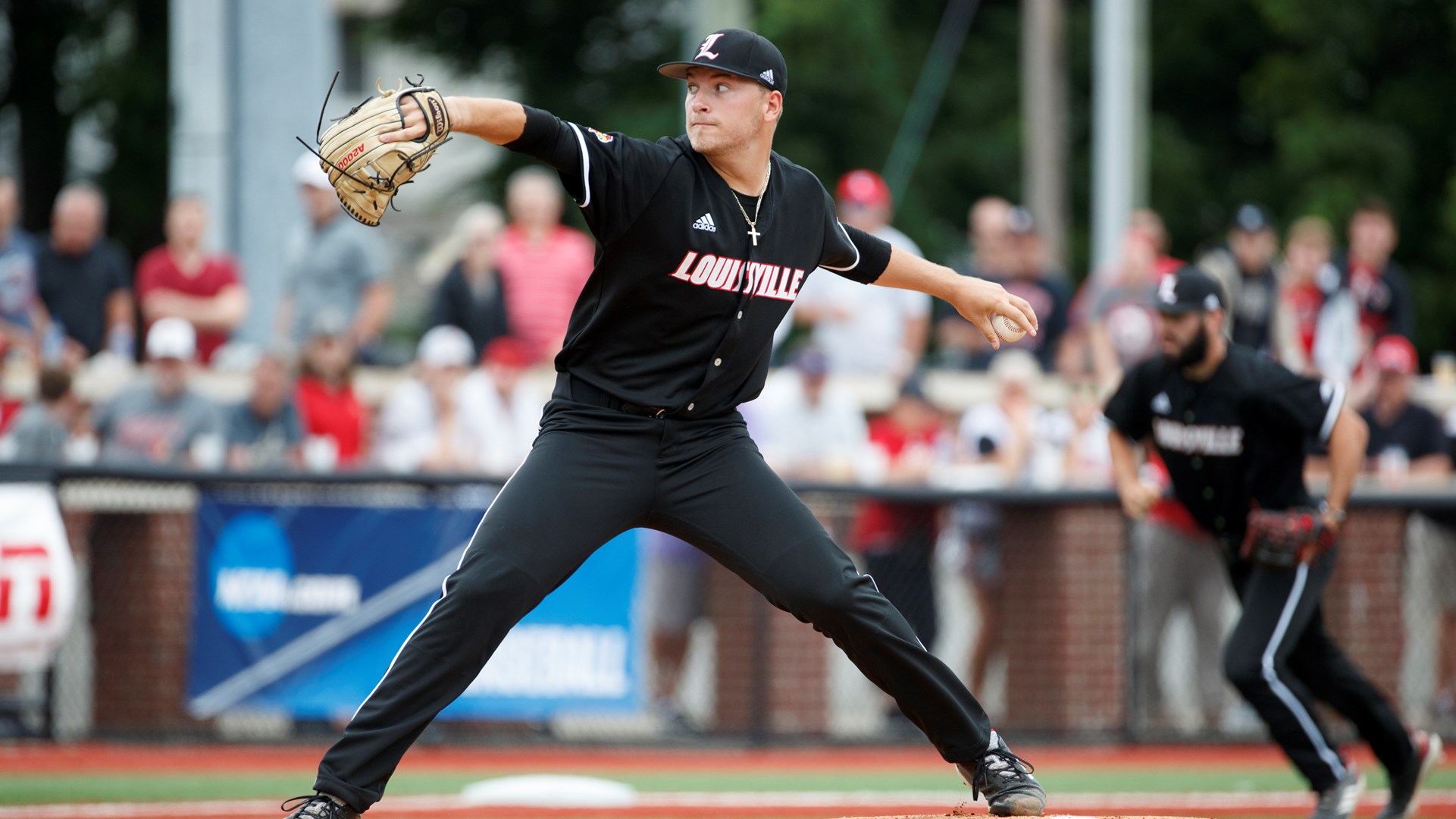© 2026 ALLCITY Network Inc.
All rights reserved.

Next week marks the start of the 2020 MLB Draft and DNVR Rockies is planning full live coverage of the first round on Wednesday, June 10.
While this year’s draft has been limited to only five rounds, Colorado has a great opportunity to bolster its farm system with the seventh-highest bonus pool of the 30 teams at $10,339,700.
The Rockies will still have six selections during the two-day affair including the ninth overall pick as well as a competitive balance pick at 35th overall.
With just over a week until the big day, the Brothers of Conjunction sat down to create a mock draft of the first ten selections. Drew Creasman selected first and made all odd numbered picks while Patrick Lyons went second and took the even numbers.
#1 Detroit Tigers – Spencer Torkelson, 1B, Arizona State
When you’re coming off a 47-114 season and you’ve got plenty of depth issues despite plenty of offseason activity, you can’t afford to mess around and get cute.
With the first overall pick, the Tigers should take first baseman Spencer Torkelson out of ASU. Considered a safe power bat after leading the nation in home runs as a freshman in 2018, it makes all the sense in the world for Detroit to go this route.
A pair of impressive pitchers – Casey Mize, 2018 first overall, and Matt Manning, 2016 ninth overall – lead their current prospect rankings and 2019 fifth overall pick Riley Greene bolstered their outfield. Add a pair of middle infielders acquired in trades – Isaac Paredes and Willi Castro – and you’ve got MLB.com’s fifth-best group of prospects.
Adding a specimen like Torkelson should be a no-brainer for making Detroit a formidable foe in the AL Central for the second-half of this decade.
#2 Baltimore Orioles – Austin Martin, OF/INF, Vanderbilt
With the largest bonus pool of money to spend on the draft, the O’s could comfortably give Torkelson first overall money ($8.4M) should the Tigers opt for a bargain. If that’s not an option, Martin would be a great fit for an organization suffering from consecutive 100-loss seasons.
The odds on favorite to go 1-1 following a sophomore season that featured the 21-year-old with the third most hits in Division I, a position change moved him off the top spot despite showing some improved power through the 16-game season in 2020.
The only issue with Martin is finding him a place on the field. He spent last year at third base with Vandy and, after patrolling the outfield with Team USA, transitioned to center field earlier this season. Some scouts think he could even be suitable at shortstop so playing second base is even in play for 2019 All-American.
After selecting catcher Adley Rutschman with the first pick of the 2019 MLB Draft, Baltimore’s system is starting to look better after being one of the worst in recent years. Martin will further aid their chances to break the top 10 in the summer re-rankings.
#3 Miami Marlins – Asa Lacy, LHP, Texas A&M

The top pitcher in the draft, lefty Asa Lacy, should go to the Marlins as they continue to pursue a franchise rebuild.
Far from the success at Marlins Park, Miami has a farm system that MLB.com ranks fourth thanks to owning a top 15 selection in every draft since 2010. Their two best pitchers, Sixto Sanchez and Edward Cabrera, are ranked within the top 100 prospects in the game at 22 and 85, respectively. Regardless, you can never have too much pitching.
The Marlins are not in a spot with their organization to get specific about grabbing a player at a certain position. They have to take the best player on the board and that is very likely to be Lacy. Almost any other choice would be an overthink.
Lacy brings a 6’4″ frame that can fire a fastball that dials up to 98 MPH with a slider that has drawn comparisons to 2014 third overall pick Carlos Rodón of the Chicago White Sox who spent all of 10 starts in the minor before contributing to the big league club in April of 2015.
#4 Kansas City Royals – Zac Veen, OF, Spruce Creek HS, FL
After nabbing three starting pitchers in the first 34 picks of the 2018 MLB Draft, including one of the top college arms in Brady Singer at No. 18, KC should be turning their eyes to the offensive side of the ball even after taking high schooler Bobby Witt Jr. at 2nd overall in 2019.
Veen had an excellent junior year and followed that up by packing on 20 pounds of muscle. At 6’5″ and 200 lbs, his lofty swing projects to provide the Royals with excellent power even if strikeout tendencies may be higher than preferred at this stage.
While Veen has been vocal about playing center field and winning an MVP Award in the future, he may ultimately end up in a corner outfield spot. With the unlikeliness of a minor league season and almost certainly any short-season minors for 2020, Veen’s development – and that of any other prep player – may be the most unorthodox of recent memory.
#5 Toronto Blue Jays – Emerson Hancock, RHP, Georgia

The best right-handed pitcher in the class may not have quite the upside as some others in this incredibly deep pitching class, but Hancock is probably the most prepared to pitch in MLB right now considering his excellent command.
The Blue Jays believe their bright future is right around the corner, featuring the super-talented children of all your favorite players from the 90s and 2000s: Dante Bichette, Vladimir Guererro, Craig Biggio.
A quick-riser like Hancock makes sense here as a high school arm might not come to fruition until Bo, Vlad Jr, and Cavan are closer to free agency.
#6 Seattle Mariners – Nick Gonzales, SS/2B, New Mexico St
Even though they have the sixth pick, Seattle has just the ninth-highest bonus pool since they are without a competitive balance pick in the first or second round. If Gonzales falls this far, it won’t matter what happens after that. Baseball’s ninth-best system will take another step forward.
The reigning Cape Cod League MVP may be the second coming of the Laser Show as the 5’10” middle infielder has drawn comparisons to Dustin Pedroia and Keston Huira. Considering he began his 2020 campaign with 12 home runs and 36 RBI, most in the nation and coming in just 16 games, those comparisons may undervalue his abilities.
A shortstop with the Aggies, the odds favor a move to second or third base at some point in Gonzales’ future. The only other wager worth making is whether or not GM Jerry Dipoto trades the 21-year-old for a different package of prospects.
#7 Pittsburgh Pirates – Garrett Mitchell, OF, UCLA

The Pirates are no stranger to incredibly toolsy outfielders and they could aim to grab yet another.
One of the best athletes in the draft, UCLA’s Garrett Mitchell can run and field with the best of them. While there are questions about whether he can make enough contact, he has an intriguing power profile as a 6’3″ left-handed hitting outfielder that could continue to develop further.
It’s hard to go wrong with a guy who has been slapped with an 80-run tool, plays elite defense and might become an elite power hitter.
#8 San Diego Padres – Max Meyer, RHP, Minnesota
If Max Meyer were two-to-three inches taller, he’d likely be the top amateur pitcher in this stacked class of college arms.
He’s got two elite pitches that separates him from the pack. Meyer’s fastball stays in the mid-90s late in the game and his slider is hands-down the best in this draft. His changeup even has potential to become elite, too.
The concern over the 21-year-old is consistency as he only moved into the rotation in 2019 for the Golden Gophers. If anyone can afford to take a risk on a player like Meyer, it’s the Friars and their exceptional assemblage of top prospects.
#9 Colorado Rockies – Reid Detmers, LHP, Louisville

Everyone needs quality pitching. But Colorado needs to draft quality pitching more than any team due to the 14,000ft hurdles in attracting free agents to Coors Field.
With plenty of promising arms throughout this year’s draft, selecting a bat in this spot wouldn’t be awful, but Detmers is simply too tempting to ignore.
Called “the most polished strike thrower in the draft” by Baseball America, the big lefty has a fastball that touches 94 with deception to go along with a curveball in the low-70s that has extraordinary depth and shape. Plus, he’s got an above average change-up. Not bad for a player deemed to be a potential No. 3 starter.
He would join a Rockies system bereft of left-handed pitching with Kyle Freeland and Ryan Rolison as the only southpaws in the entire organization who register at all on the national conscience.
There may be a pitcher still available at the ninth spot with better raw stuff that could profile as a potential No. 1 or No. 2 ceiling, but Detmers is believed to be a better bet to reach his potential and rise through the minors relatively quickly.
#10 Los Angeles Angels – Garrett Crochet, LHP, Tennessee
The Angels may be in a tough spot this year should the draft play out in this fashion. With no real need to take an outfielder with MLB.com’s sixth-best prospect Jo Adell ready to flank future Cooperstown resident Mike Trout, L.A. may have to look away from the best available player in Heston Kjerstad of Arkansas.
Other players with more promise could make sense here, but drafting high schooler like pitchers Mick Abel or Jared Kelly, or even an outfield bat like Austin Hendrick or Robert Hassell III don’t make a lot of sense for an organization with too many high-risk players in the minors as it is.
The best available arm at spot, Crochet could slip to latter teens depending on what happens before the 10th pick. He’s a lanky lefty that also lacks a pedigree as the Friday night starter having spent time in and out of the rotation in Knoxville. A three-inning start was all he’d contribute in 2020 before the season ended.
Crochet has a pitch mix similar to Meyer – fastball in the upper-90s, above-average slider and changeup – and could challenge Detmers for the second southpaw off the board depending on how the early picks play out.
Comments
Share your thoughts
Join the conversation




